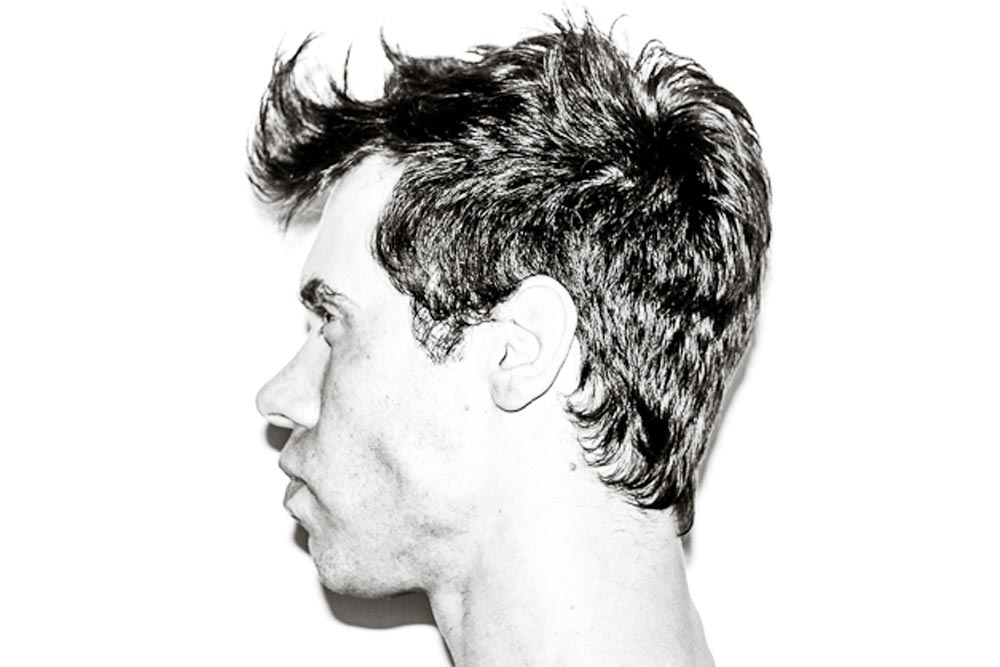Raleigh, NC
MIXED MEDIA
It’s not terribly uncommon for a one-day home improvement task to expand into a one- or two-week project. But it is rare that such a project would lead to a creative breakthrough that changes the focus of your career. Artist Shaun Richards would know. It was 2006 and he had just moved to Raleigh from New York, where he’d attended graduate school at SUNY Empire State College. In a new city and eager to make a fresh start with his work — which had previously been dominated by paintings of moody, sepia-toned Southern landscapes — Richards was frustrated by his lack of progress in finding a new direction. Despite spending lots of time and supplies trying different methods and approaches, the new paintings failed to thrill. “They were all kind of lackluster, ugly, boring,” recalls Richards. “I wanted the work to change, but I didn’t know how to make it change. And I felt locked into it.”
In a move that was probably part palate cleanser and part productive procrastination, he decided to take a break from the pressure he’d been putting on himself. He set aside a whole day to make a big painting for his new apartment, where the walls were still devoid of art. As he poured himself into the just-for-fun painting (making something not for a gallery or a critic but just for himself), Richards felt a renewed energy and freedom. He started layering in new elements: text, collage, bright colors, whatever felt interesting. Looking at the finished product two weeks later, he knew he was onto something, and it set him on the path toward the art he’s making today.

ARTIST'S NOTE
“Through the intersection of text, image, low-brow aesthetics, and repetition, my work questions our complicity in and responsibility for the world.”
From complex compositions — that might include stencils, iron-ons or graphite and sometimes more than 12 layers of paint — to pastel portraits of children with black-and-white figures superimposed over them, Richards describes his art as “a focus on our complicity and responsibility for the world in which we live.” He’s most interested in narratives that deal with identity, social dynamics, role-modeling, political incentives, artifice, notions of beauty and societal norms. And he holds space for his Southern origins. Born in Georgia, raised in Virginia and educated at UNC-Wilmington, during grad school in New York Richards would regularly daydream himself into Southern scenes from his Brooklyn apartment. More than happy to relinquish the frenetic pace of life in New York, his return to North Carolina has been a boon to both his art and his quality of life. But it didn’t entirely cure him of his wanderlust. Currently in the process of moving to Hamburg, Germany, where his wife accepted a two-year position at a museum, Richards is looking forward to an inspired European adventure.
![]()

How would you describe the message or purpose behind your art?
“My work examines incentives, social dynamics, and causal relationships. These constructions take into account notions of beauty, artifice, nostalgia, and commerce. Making this work is my way of synthesizing how we deal with ethics, our sense of self and identity, as well as community.”
What is the biggest hurdle you’ve overcome in your art career?
“It's hard to explain to non-artists how much work goes into what artists do, and how much consistent time it takes. The value of doing it full-time, and the commitment/investment in one's self to do so despite the financial risk, is daunting. That feels like the biggest hurdle — getting to a place where you believe enough in yourself to take that step as a young artist.”
What is the most important thing you've learned this year?
“I got to where I really enjoyed quarantine. I'm already more introverted than most, so after 2-3 weeks I really settled into the routine of it and found that I became closer with my now wife. And although I missed the options initially of going out, movies, concerts...I found it enjoyable. I guess I learned a lesson in less is more, and about our own adaptability.”
Tell us about a teacher who had a positive impact on your art.
“Michael St. John, my mentor in grad school. His big influence was construction and order of operations. I used to just render things before grad school — all on the same plane, physically speaking with regard to paint on canvas. [Michael] told me to go to the Met and look at a number of pieces in their collection, both classical and contemporary, and to look at how they're constructed in terms of layers. Now it’s one of the biggest parts of my work that I enjoy: how to strategically create something, in what order mediums are applied. I get satisfaction from doing them in an order that, under closer inspection, the viewer can see step 1 to 20.”
What’s something about you that we might not find on the internet?
“I have a twin sister, I love landscape gardening. And I played a bit of college baseball.”

